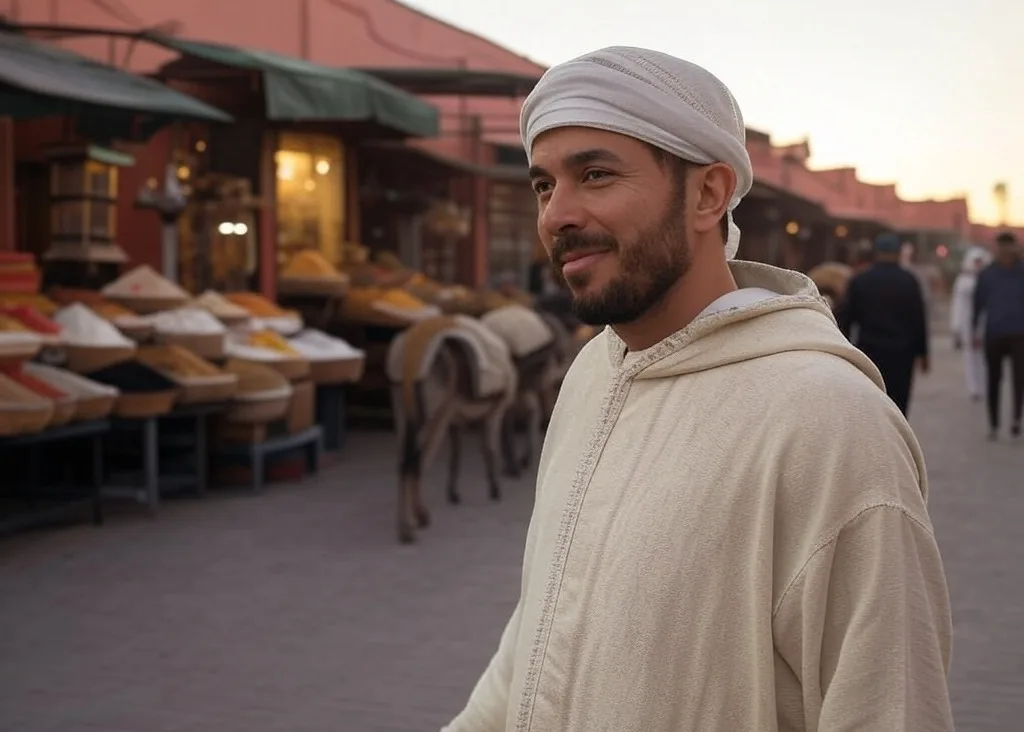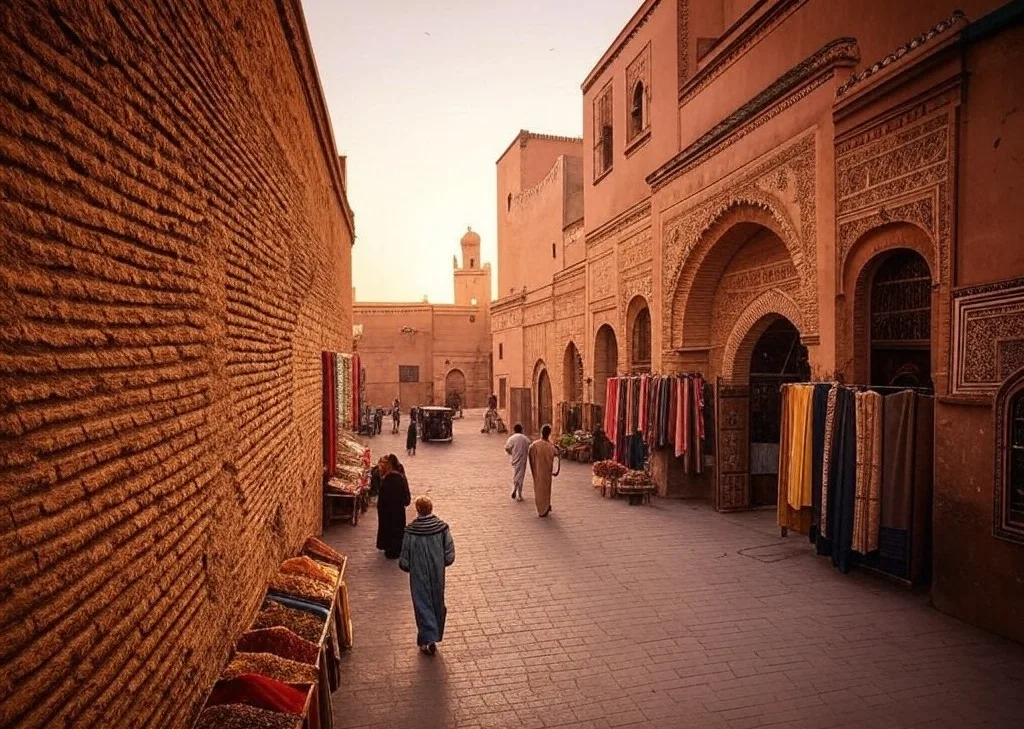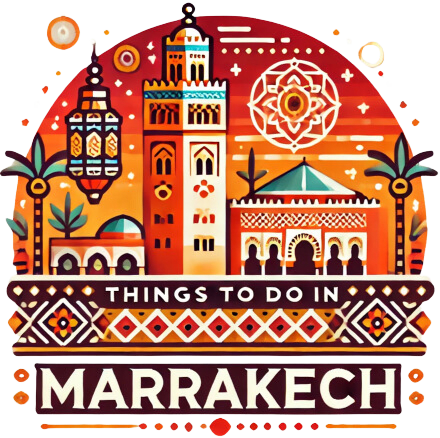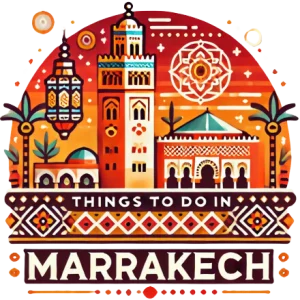If you’re looking for a vibrant, culturally immersive escape, a weekend in Marrakech is an experience like no other. Situated at the crossroads of the Sahara Desert, the Atlas Mountains, and centuries of Moroccan heritage, this city enchants travelers with its bustling souks, intricate architecture, and flavorful cuisine. Two days might seem short, but with the right plan, you can dive into Marrakech’s essence—exploring the medina’s winding alleys, feasting on aromatic local dishes, and witnessing the city’s mesmerizing traditions unfold around you.
In this guide, you’ll find everything you need to maximize your time, from must-see historical landmarks to hidden cultural gems and practical tips that ensure a smooth, enjoyable stay. Whether you’re a seasoned traveler or embarking on your very first trip to Morocco, this article will help you discover why a weekend in Marrakech feels like stepping into a living tapestry of color, sound, and flavor.
Table of Contents
Why Marrakech is Perfect for a Weekend Getaway
A weekend in Marrakech offers a concentrated dose of Moroccan life, making it an excellent choice for travelers who crave a diverse cultural experience in a short timeframe. Here are a few reasons why:
- Cultural Tapestry: Marrakech is a melting pot of Berber, Arab, and Andalusian influences,providing a fascinating glimpse into Moroccan traditions.
- Architectural Wonders: From ancient palaces to mosques and riads, the city is a showcase of intricate tilework, stucco carvings, and Arabic calligraphy.
- Sensory Overload: Marrakech is teeming with life—colorful spice stalls, the aroma of tagines simmering, and the sounds of street musicians and storytellers.
- Accessibility: Marrakech Menara Airport (RAK) has direct flights from many international hubs, making it easy to slip away for a quick weekend adventure.
The city’s energy is tangible, ensuring that even a short stay can leave a lasting impression. Whether you’re wandering through the medina’s labyrinthine streets or taking in the sunset from a rooftop terrace, every moment is an invitation to immerse yourself in a new world.
Before You Go: Practical Tips
1. Travel Documents
- Check visa requirements for your nationality. Many travelers from Europe and North America can enter Morocco visa-free for short stays.
- Ensure your passport is valid for at least six months beyond your travel dates.
2. Currency and Budget
- The local currency is the Moroccan Dirham (MAD). You’ll find plenty of ATMs in tourist areas.
- Credit cards are accepted in higher-end restaurants and hotels, but smaller vendors often require cash.
3. Language
- Moroccan Arabic (Darija) is the primary spoken language, but French is also widely used.
- English is increasingly common in popular tourist neighborhoods, though learning basic French or a few Arabic phrases is helpful.
4. Weather and Clothing
- Marrakech has a semi-arid climate. Summers can be scorching, while winters are mild with cooler nights.
- Dress modestly, particularly in the medina, to respect local customs—cover shoulders and knees when possible.
5. Transportation
- Taxis and ridesharing services are widely available. Always negotiate fares or ensure the driver uses the meter.
- The medina is largely pedestrian, so pack comfortable shoes for walking.
Day 1: Immerse Yourself in the Historic Medina

Your first day in Marrakech is best spent within the red walls of the medina, the oldest district and cultural heartbeat of the city. Lose yourself in the sights, scents, and sounds of this UNESCO World Heritage Site.
Jemaa el-Fnaa: The Heart of Marrakech
Begin your weekend in Marrakech in Jemaa el-Fnaa, an expansive square that has captivated visitors for centuries:
- Morning Vibes: In the early hours, stalls selling freshly squeezed orange juice and local breakfast items like msemen (Moroccan pancakes) set up shop. Snake charmers and henna artists also dot the square.
- By Night: As dusk settles, Jemaa el-Fnaa turns into a carnival of food stalls serving grilled meats, soups, and sweet pastries. Storytellers and musicians gather large crowds, preserving an ancient oral tradition.
A trip to Jemaa el-Fnaa is like stepping into a living museum of Moroccan life—alive, chaotic, and utterly enchanting.
Koutoubia Mosque and Its Surroundings
A stone’s throw from Jemaa el-Fnaa stands the majestic Koutoubia Mosque. Its 12th-century minaret dominates Marrakech’s skyline and acts as a navigational landmark for visitors:
- Architectural Grandeur: The minaret’s ornate details are a fine example of Almohad architecture, blending geometric patterns with understated elegance.
- Gardens: The surrounding gardens offer a peaceful respite from the bustling square. Stroll among rosebushes, palms, and fountains.
While non-Muslims are not permitted inside the mosque, admiring the exterior and its lush surroundings is a highlight of any day in Marrakech.
Diving into the Souks
No weekend in Marrakech is complete without venturing into the medina’s famed souks. These interconnected marketplaces are a treasure trove for souvenirs, crafts, and local goods:
- Spice Souk: The vibrant colors and fragrances of turmeric, saffron, cumin, and paprika create a sensory feast. Many stalls offer spice blends you can take home.
- Leather Souk: Marrakech is known for its leather goods—bags, slippers (babouches), and belts. Watch artisans at work using age-old methods.
- Textile and Carpet Souk: Marvel at brightly patterned rugs, woven blankets, and fabrics that showcase the region’s cultural motifs.
Insider Tip: Getting slightly lost is half the fun. The narrow alleys sometimes feel like a labyrinth, but friendly locals can guide you—just be ready to tip for their assistance.
Day 2: Beyond the Medina Walls

After soaking up the energy of the medina, it’s time to explore other facets of Marrakech. Day 2 brings you to historical palaces, lush gardens, and the diverse culinary scene of the city.
Historical Palaces and Museums
1. Bahia Palace
Constructed in the late 19th century, Bahia Palace exemplifies the finest in Moroccan craftsmanship—elaborate tilework, carved stucco, and tranquil courtyards lined with orange trees. The palace’s design aimed to capture the essence of Islamic and Moroccan style, offering a window into the opulent life of the past.
2. El Badi Palace
Once a grand complex commissioned by Sultan Ahmad al-Mansur, El Badi Palace is now mostly in ruins. Its towering walls and sunken gardens hint at the site’s former splendor. Climb to the rooftop terraces for panoramic views over the city and the distant Atlas Mountains.
3. Musée de Marrakech
Housed in the Dar M’Nebhi Palace, this museum showcases traditional art, ceramics, and historical artifacts. Its central courtyard features exquisite zellige (mosaic tilework) and a grand chandelier—an architectural gem.
Gardens and Green Spaces
1. Majorelle Garden
Created by French painter Jacques Majorelle and later restored by Yves Saint Laurent, this garden is famous for its electric-blue buildings and exotic flora. Arrive early to beat the crowds, and linger by the koi-filled ponds.
2. Menara Gardens
Dating back to the 12th century, the Menara Gardens feature olive groves and a large reflecting pool. On a clear day, the Atlas Mountains form a picturesque backdrop—a peaceful spot for a leisurely afternoon.
Savoring Moroccan Flavors
A weekend in Marrakech wouldn’t be complete without indulging in the city’s signature dishes:
- Tagine: Slow-cooked in a conical clay pot, tagine is a hearty stew with meat or vegetables flavored by a blend of local spices.
- Couscous: Typically enjoyed on Fridays, couscous is served with vegetables, meat, and a savory broth.
- Moroccan Mint Tea: Often called “Moroccan whiskey,” it’s sweet, mint-infused tea poured from a height to create a frothy top—symbolizing hospitality.
Many restaurants in Gueliz and within the medina cater to all dietary preferences, including vegetarian and vegan options.
Shopping Etiquette and Bargaining Tips
Shopping in Marrakech is more than a simple transaction; it’s a cultural experience:
- Haggle Politely: Bargaining is expected. Start around half the quoted price, then negotiate toward a middle ground. Keep it friendly!
- Quality Checks: Examine items carefully—leather goods, textiles, and pottery should show signs of expert craftsmanship.
- Understand the Value: Handmade pieces cost more, but they offer authenticity and lasting quality.
- Walk Away Tactic: If you still find the price high, politely decline and walk away. Vendors may lower it to make a sale.
Nightlife and Entertainment
Marrakech might not rival major European capitals for nightlife, but it still offers plenty of evening allure:
- Rooftop Lounges: Many riads and cafés near Jemaa el-Fnaa have rooftop terraces perfect for enjoying mint tea or fresh juices under the starry sky.
- Traditional Music and Shows: Look for venues hosting Gnawa music—an Afro-Moroccan spiritual tradition featuring rhythmic instruments and dancers.
- Modern Clubs: Head to Hivernage or Gueliz for upscale bars and nightclubs where international DJs spin tunes into the late hours.
If you prefer relaxation, consider a traditional hammam (Moroccan bath) to soothe those muscles after a day’s exploration.
Where to Stay: Accommodation Options
Your choice of lodging can shape your weekend in Marrakech. Here are three popular options:
1. Riads
- Traditional Experience: These historic homes offer an authentic setting, often featuring inner courtyards, mosaic tiling, and ornate woodwork.
- Intimate Ambiance: Enjoy personalized hospitality, homemade breakfasts, and the chance to learn from local hosts.
2. Modern Hotels
- Familiar Amenities: For those seeking a modern touch, upscale hotels in Hivernage or the city center may be ideal.
- Resort-Style Comfort: Expect on-site restaurants, swimming pools, and spa services for extra convenience.
3. Budget-Friendly Hostels
- Social Scene: Hostels are great for meeting fellow travelers and often offer group tours to nearby attractions.
- Cost Savings: Shared dorms and facilities keep expenses down, perfect for those on a tight budget.
Cultural Etiquette and Safety
Marrakech is generally safe, but consider these tips for a smooth experience:
- Modest Dress: Cover shoulders and knees, especially in religious and historical areas.
- Greetings: A simple “Salam Alaikum” (peace be upon you) can set a welcoming tone.
- Pickpocketing: Keep bags zipped and valuables close in busy spots like Jemaa el-Fnaa.
- Photography: Always ask permission before photographing people to respect local customs.
Best Times to Visit for a Weekend in Marrakech

1. Spring (March to May)
Mild temperatures and blossoming gardens make spring a fantastic season for a weekend in Marrakech.
Expect daytime highs in the mid-20°C range (70s °F).
2. Autumn (September to November)
Another pleasant period as summer heat subsides. Cooler evenings allow you to savor hearty Moroccan dishes without the scorching sun.
3. Winter (December to February)
Winter offers milder weather, though nights can be chilly. Fewer tourists mean shorter lines at popular attractions.
4. Summer (June to August)
Temperatures can exceed 38°C (100°F). If you visit in summer, schedule outdoor activities early morning or late afternoon to avoid the midday heat.
Suggested Add-Ons If You Have Extra Time
If you can extend your trip beyond a weekend in Marrakech, consider these nearby destinations:
- Atlas Mountains: Easily reached for a day trip. Explore the Ourika Valley or hike Berber villages.
- Essaouira: A coastal town about 2.5 hours away, known for its beaches, historic ramparts, and fresh seafood.
- Sahara Desert Overnights: Join a tour for camel trekking and stargazing in the expansive dunes.
- Agafay Desert: Closer than the Sahara, offering rocky landscapes and glamping experiences under the stars.
Conclusion and Next Steps
A weekend in Marrakech delivers an immersive journey through Morocco’s vibrant culture—from lively souks and historic monuments to sumptuous cuisine and heartwarming hospitality. By following this guide, you’ll navigate the medina’s winding streets, indulge in local flavors, and even catch a glimpse of modern Marrakech in Gueliz or Hivernage.
Though two days may seem short, the sights, sounds, and tastes of the Red City linger long after you leave. Marrakech’s unique blend of tradition and modernity has a way of capturing your imagination and beckoning you
to return.
Ready to Begin Your Adventure?
- Book flights and reserve a cozy riad to get the full Moroccan atmosphere.
- Plan your top attractions in the medina—yet leave room for spontaneous discoveries.
- Embrace the culture. Some of the most memorable moments happen off the well-trodden path.
For more insights on planning your Morocco trip, check out our Ultimate Morocco Travel Guide .
To learn more about Marrakech’s medina, visit the UNESCO World Heritage Centre.
Safe travels, and enjoy your magical weekend in Marrakech!
Share your experiences to inspire others to explore this enchanting North African gem
Frequently Asked Questions About Spending a Weekend in Marrakech
Whether you’re planning a whirlwind weekend trip or looking to fine-tune your travel itinerary, these FAQ cover the most common questions travelers ask. From the best times to visit to insider tips on local customs, get ready to make the most of your stay in the Red City!
What is the best time of year to visit Marrakech for a weekend?
Spring (March to May) and autumn (September to November) are ideal, with comfortable temperatures and fewer crowds. If you prefer cooler weather, winter is also a good option, though nights can be chilly.
How many days should I spend in Marrakech if I want to see the main sights?
A weekend (two or three days) is enough to experience the medina, visit major landmarks like Jemaa el-Fnaa and the Koutoubia Mosque, and explore a few palaces. However, if you have more time, extending your stay allows for day trips to the Atlas Mountains or Essaouira.
Is Marrakech safe for solo travelers?
Generally, Marrakech is safe for solo travelers. As with any popular destination, stay alert in crowded places, keep valuables secure, and research accommodations in central, reputable areas. Modest dress and respectful behavior are also appreciated by locals.
Can I find vegetarian or vegan food in Marrakech?
Yes, vegetarian and vegan options are becoming more common in Marrakech, particularly in the medina and districts like Gueliz. Many Moroccan dishes can be adapted for meat-free diets, and you’ll also find specialized restaurants catering specifically to plant-based meals.
What should I pack for a weekend in Marrakech?
Pack comfortable walking shoes for navigating the medina’s narrow streets, modest clothing to respect local customs, and layers if you visit during cooler months. Don’t forget essentials such as sunscreen, a lightweight scarf for covering shoulders in religious sites, and any necessary prescriptions.




